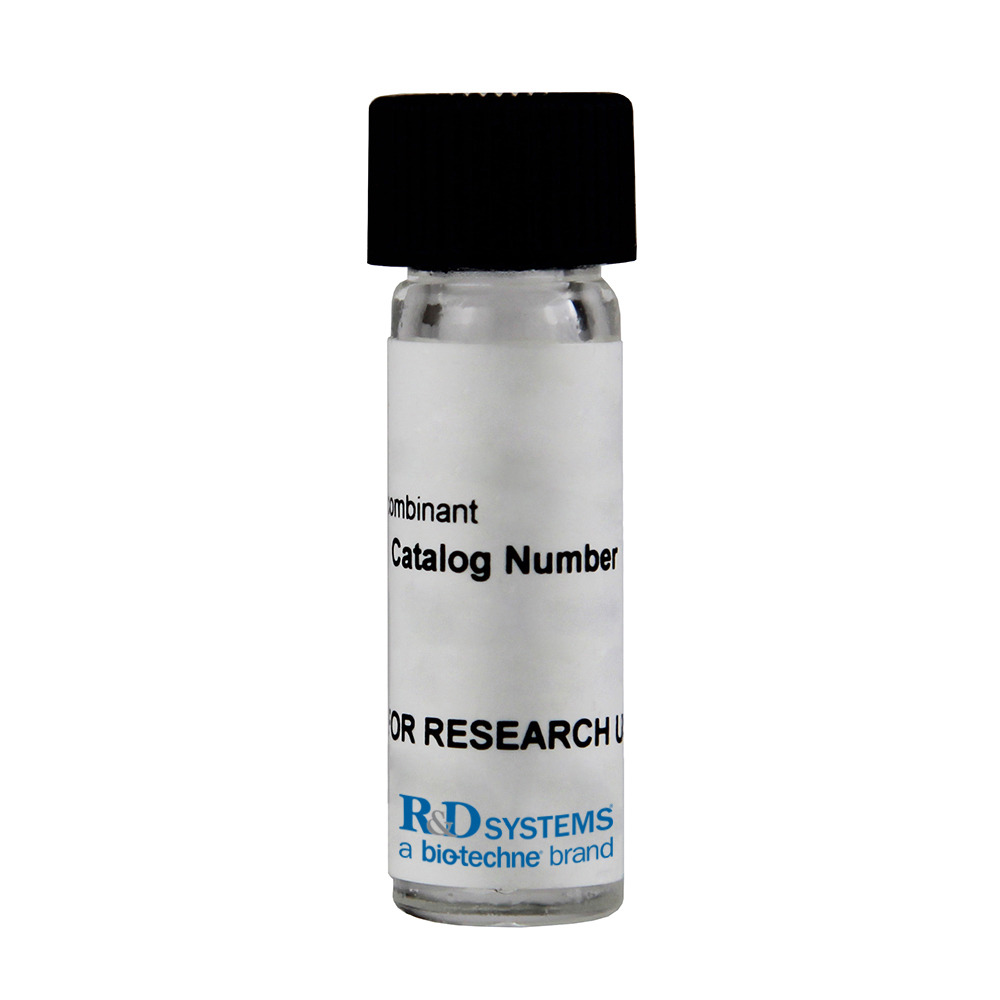Recombinant Mouse Growth Hormone R (GHR) Fc Chimera, CF
R&D Systems, part of Bio-Techne | Catalog # 1360-GR


Key Product Details
Source
Accession #
Structure / Form
Conjugate
Applications
Product Specifications
Source
| Mouse GHR (Thr25 - Gln273) & (Ile98 - Gln273) Accession # Q3UP14 |
DIEGRMD | Human IgG1 (Pro100 - Lys330) |
| N-terminus | C-terminus |
Purity
Endotoxin Level
N-terminal Sequence Analysis
Predicted Molecular Mass
SDS-PAGE
Activity
The ED50 for this effect is 4-16 ng/mL in the presence of 0.2 ng/mL of rhGH.
Formulation, Preparation and Storage
1360-GR
| Formulation | Lyophilized from a 0.2 μm filtered solution in PBS. |
| Reconstitution | Reconstitute at 100 μg/mL in sterile PBS. |
| Shipping | The product is shipped at ambient temperature. Upon receipt, store it immediately at the temperature recommended below. |
| Stability & Storage | Use a manual defrost freezer and avoid repeated freeze-thaw cycles.
|
Background: Growth Hormone R/GHR
Growth hormone (GH), also known as somatotropin, is a member of a family of growth factors that includes prolactin, placental lactogens, proliferins and somatolactin (1, 2). It is synthesized primarily by somatotropes in the anterior pituitary and is released as an endocrine hormone. Other cells and tissues, including lymphoid tissues, can also produce GH (3). GH is a pleiotropic molecule which can act directly or indirectly via IGF-I to regulate growth and metabolism as well as enhance T cell survival and thymic functions (1, 2, 4). GH exerts its biological actions by binding to the GH receptor (GHR) that is present in many cell types (1, 2). Mouse GHR cDNA encodes a 650 amino acid (aa) residue type I transmembrane protein with a 24 aa signal peptide, a 249 aa extracellular domain, a 24 aa transmembrane domain and a 353 aa cytoplasmic domain (5). An alternatively spliced secreted isoform of mouse GHR also exists (6). This variant corresponds to the serum GH-binding protein. Ligation of GHR by GH has been shown to result in receptor dimerization and activation of the JAK/STAT signaling cascade (7). The soluble GHBP has been shown to interfere with GH signaling by competing with the transmembrane receptor of GH. Alternatively, the GHBP has also been shown to enhance GH action by slowing GH clearance (8).
References
- Goffin, V. et al. (1996) Endocrine Rev. 17:385.
- Le Roith, D. et al. (2001) Endocrine Rev. 22:53.
- Clark, R. (1997) Endocr. Rev. 18:157.
- Welniak, L.A. et al. (2002) J. Leukoc. Biol. 71:381.
- Smith, W.C. et al. (1989) Mol. Endocrinol. 3:984.
- Edens, A. et al. (1994) Endocrinol. 135:2802.
- Carter-Su, C. et al. (1996) Annu. Rev. Physiol. 58:187.
- Postel-Vinay, M.C. and J. Finidori (1995) Eur. J. Endocrinol. 133:654.
Long Name
Alternate Names
Gene Symbol
UniProt
Additional Growth Hormone R/GHR Products
Product Documents for Recombinant Mouse Growth Hormone R (GHR) Fc Chimera, CF
Product Specific Notices for Recombinant Mouse Growth Hormone R (GHR) Fc Chimera, CF
For research use only